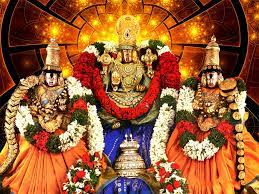
The story of Goddess Sita: Characters and Themes
The story of Goddess Sita is a timeless tale of love, devotion, and sacrifice that has been passed down through generations in Indian mythology. It is a story that continues to inspire and resonate with people all over the world, and has become an integral part of Indian culture and identity. This blog will explore the characters and themes that make up the story of Goddess Sita.
Characters
Goddess Sita

Sita is the central character of the story, and is known for her beauty, grace, and devotion to her husband, Lord Rama. She is the embodiment of the ideal Indian woman, and is revered for her purity, strength, and sacrifice. Sita's character is a symbol of feminine power and resilience, and continues to inspire women all over the world.
Lord Rama

Rama is the prince of Ayodhya, and is the embodiment of dharma (righteousness) and duty. He is known for his courage, wisdom, and compassion, and is revered as an avatar of Lord Vishnu. Rama's character is a symbol of the ideal man, who upholds moral values and principles.
Lakshmana

Lakshmana is Rama's younger brother, and is known for his unwavering loyalty and devotion to his brother. He accompanies Rama and Sita on their exile, and helps them overcome various obstacles. Lakshmana's character is a symbol of brotherly love and sacrifice.
Ravana

Ravana is the demon king of Lanka, who abducts Sita and takes her to his kingdom. He is known for his immense power and intellect, but is also notorious for his arrogance and cruelty. Ravana's character is a symbol of evil and temptation, and represents the human tendency to succumb to negative influences.
Themes
Love and Devotion

The story of Sita and Rama is a tale of love and devotion that transcends time and space. Sita's love and devotion to Rama is unshakeable, and she follows him into exile without hesitation. Rama's love and devotion to Sita is equally strong, and he goes to great lengths to rescue her from Ravana's clutches. The theme of love and devotion is a testament to the power of human emotions, and highlights the importance of relationships and connections in life.
Sacrifice - Sita's sacrifice is a central theme of the story, as she willingly endures numerous hardships and trials to prove her purity and fidelity. She accompanies Rama into exile, and later sacrifices her freedom and comfort to stay with him during his exile. When she is abducted by Ravana, she remains steadfast in her devotion to Rama and refuses to submit to his advances. Sita's sacrifice is a symbol of the strength and resilience of the human spirit, and highlights the importance of selflessness and sacrifice in life.
Good versus Evil

The story of Sita and Rama is a classic tale of good versus evil, with Ravana representing the forces of darkness and temptation, and Rama representing the forces of righteousness and virtue. The conflict between good and evil is a universal theme that resonates with people all over the world, and highlights the importance of making ethical choices and upholding moral values in life.
In conclusion,
the story of Goddess Sita is a powerful and inspiring tale that continues to resonate with people all over the world. The characters of Sita, Rama, Lakshmana, and Ravana represent universal themes of love, devotion, sacrifice, and the conflict between good and evil. Sita's unwavering devotion to Rama, and her willingness to endure numerous hardships and trials, serves as a symbol of the strength and resilience of the human spirit. The story of Sita continues to be an integral part of Indian culture and mythology, and its enduring legacy serves as a testament to the enduring power of storytelling and mythology.
author
Darshita Nautiyal

